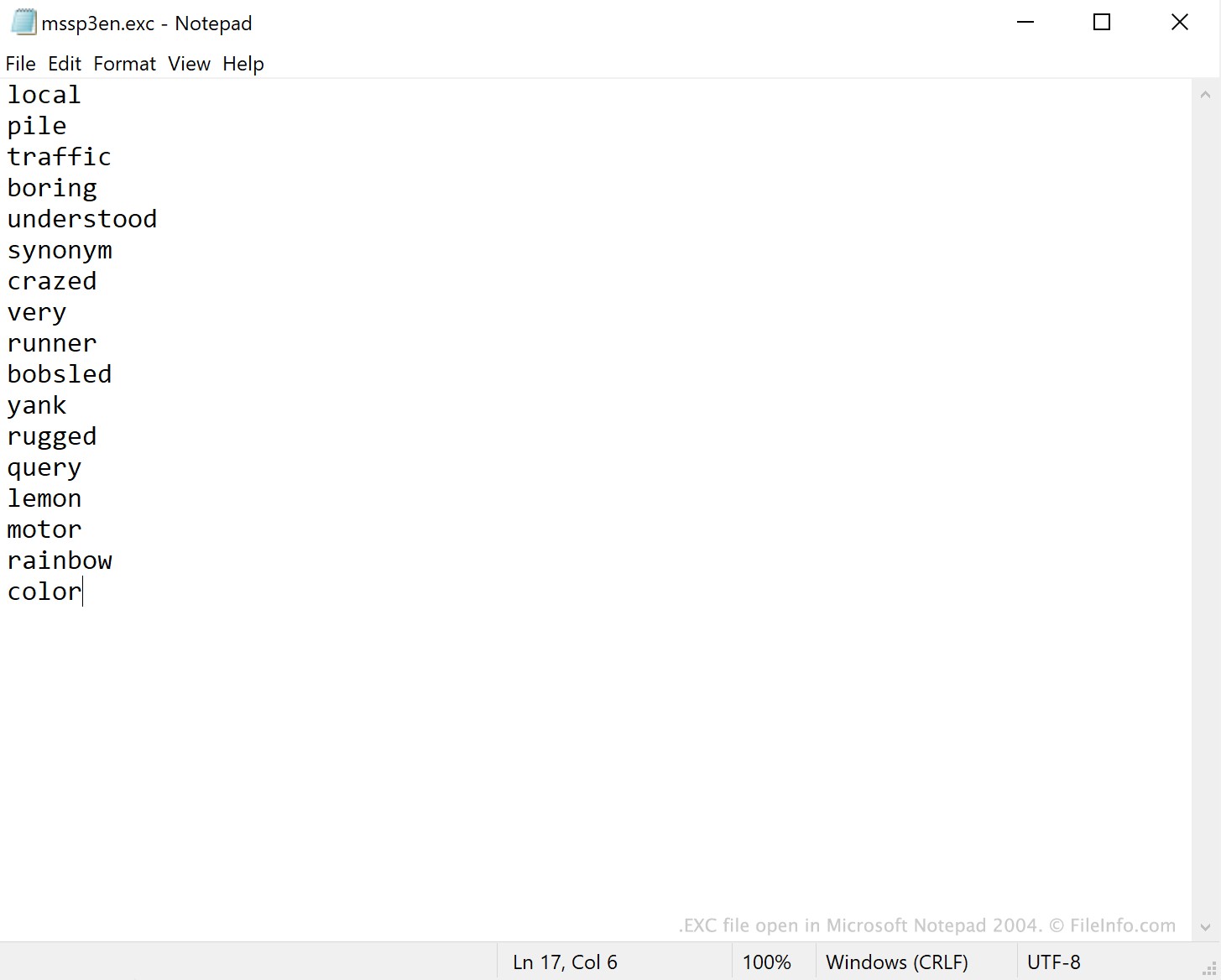An Exc File is a plain text file used by Microsoft Word 2003 and older Microsoft Office applications to manage spelling exceptions. It acts as a custom exclusion dictionary, instructing Word to flag specific words as misspelled, even if they are technically correct. This functionality allows users to catch habitual typing errors or enforce specific spelling conventions.
While Windows relies on .LEX files for its primary spelling dictionaries, EXC files offer a layer of personalization. For instance, if a user frequently misspells “receive” as “recieve,” adding “recieve” to an EXC file will prompt Word to mark it as incorrect, encouraging the user to use the correct spelling.
EXC files are simple in structure, containing a list of words, each on a new line, written in lowercase. This straightforward format allows for easy creation and modification using any text editor like Notepad. To use an EXC file, it typically needs to be named “msssp3en.exc” and placed in the appropriate directory for English language settings. However, this naming convention may vary depending on the specific language and regional settings.
It’s important to note that this method of custom exclusion dictionaries is specific to older versions of Microsoft Word. Word 2007 and later versions utilize LEX files for both primary and exclusion dictionaries, rendering custom EXC files incompatible. While custom EXC files are no longer supported in modern Word versions, understanding their function provides insight into the evolution of spell-checking features in word processing software. Windows 10 retains a default EXC file, named “default.exc,” functioning as a system-wide exclusion dictionary located within the user’s AppData folder. This file can be modified to affect spelling behavior across different applications.
 Screenshot of a .exc file in Microsoft Notepad 2004
Screenshot of a .exc file in Microsoft Notepad 2004
Example of an EXC file opened in Notepad. Each line represents a word that will be flagged as misspelled by Microsoft Word.